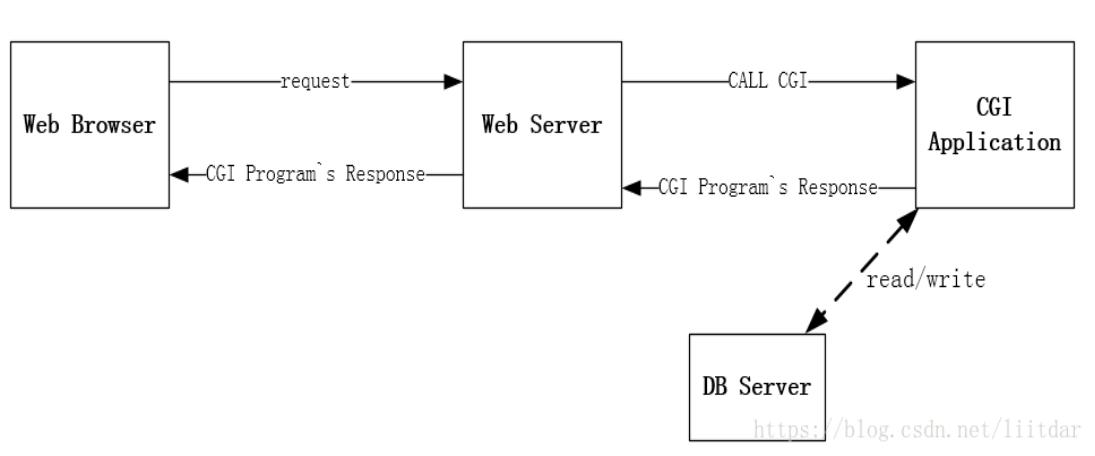What is CGI?
Common Gateway Interface (CGI) is an interface specification that enables web servers to execute an external program, typically to process user requests. Such programs are often written in a scripting language and are commonly referred to as CGI scripts, but they may include compiled programs. A typical use case occurs when a Web user submits a Web form on a web page that uses CGI. The form's data is sent to the Web server within an HTTP request with a URL denoting a CGI script. The Web server then launches the CGI script in a new computer process, passing the form data to it. The output of the CGI script, usually in the form of HTML, is returned by the script to the Web server, and the server relays it back to the browser as its response to the browser's request.
Developed in the early 1990s, CGI was the earliest common method available that allowed a Web page to be interactive. Although still in use, CGI is relatively inefficient compared to newer technologies and has largely been replaced by them.
Tonmind SIP Audio Products including IP Speaker, SIP Paging Adapter, SIP PCB Board all apply CGI that support configuration via web login. With this feature, users configure the IP Audio Products in a very easy way, usually can be completed in a few seconds.
Apart from web setting, users can also install Tonmind Network Speaker tool software called IPTool to configure . Both two configuration ways are convenient and workable. IPTool can complete most configuration, web setting is full function configuration.
Features of CGI:
It is a very well defined and supported standard.
CGI scripts are generally written in either Perl, C, or maybe just a simple shell script.
CGI is a technology that interfaces with HTML.
CGI is the best method to create a counter because it is currently the quickest
CGI standard is generally the most compatible with today’s browsers
Advantages of CGI:
The advanced tasks are currently a lot easier to perform in CGI than in Java.
It is always easier to use the code already written than to write your own.
CGI specifies that the programs can be written in any language, and on any platform, as long as they conform to the specification.
CGI-based counters and CGI code to perform simple tasks are available in plenty.
How CGI works
A reader sends a URL that causes the AOLserver to use CGI to run a program. The AOLserver passes input from the reader to the program and output from the program back to the reader. CGI acts as a "gateway" between the AOLserver and the program you write.
The program run by CGI can be any type of executable file on the server platform. For example, you can use C, C++, Perl, Unix shell scripts, Fortran, or any other compiled or interpreted language. You can also use Tcl scripts with CGI, though the extensions to Tcl described in Chapter 5 of the AOLserver Tcl Developer's Guide are not available through CGI.
With AOLserver, you have the option of using the embedded Tcl and C interfaces instead of CGI. Typically, the Tcl and C interfaces provide better performance than CGI. (See the AOLserver Tcl Developer's Guide for information on the Tcl interface and the AOLserver C Developer's Guide for information on the C interface.)
You may want to use CGI for existing, shareware, or freeware programs that use the standard CGI input, output, and environment variables. Since CGI is a standard interface used by many Web servers, there are lots of example programs and function libraries available on the World Wide Web and by ftp. This chapter describes the interface and points you to locations where you can download examples.

In conclusion, CGI can fork out a process for CGI programs to execute high speed and safety task. With application CGI, Tonmind SIP Paging System has been easy for configuration via web login way.
